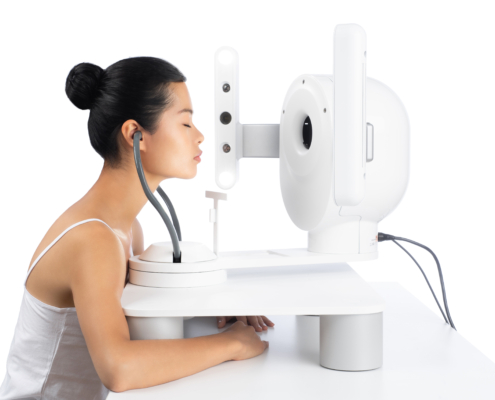 https://qima-lifesciences.com/wp-content/uploads/2022/07/Newtone-ColorFace-shooting-2r2-scaled.jpg
1707
2560
Vanessa
https://qima-lifesciences.com/wp-content/uploads/2023/03/QIMA_life_sciences.png
Vanessa2023-05-02 11:23:522024-09-02 17:06:06ColorFace – Solution d’acquisition multimodale pour le visage entier
https://qima-lifesciences.com/wp-content/uploads/2022/07/Newtone-ColorFace-shooting-2r2-scaled.jpg
1707
2560
Vanessa
https://qima-lifesciences.com/wp-content/uploads/2023/03/QIMA_life_sciences.png
Vanessa2023-05-02 11:23:522024-09-02 17:06:06ColorFace – Solution d’acquisition multimodale pour le visage entier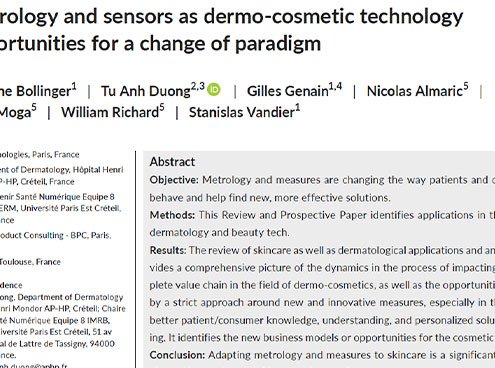
Metrology and sensors as dermo-cosmetic technology opportunities for a change of paradigm
Cosmétique, DermatologieAccording to the International Bureau of Weights and Measurements, metrology, the study of measurement, is becoming an essential aspect of all industries today in creating value.
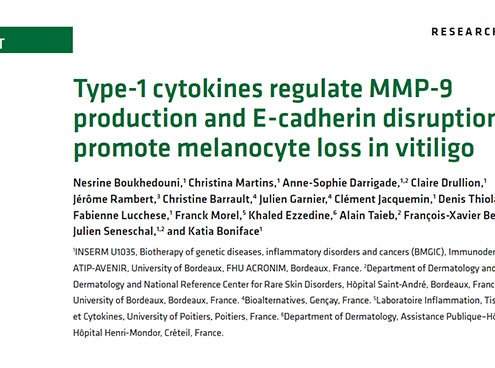
Type-1 cytokines regulate MMP-9 production and E-cadherin disruption to promote melanocyte loss in vitiligo
Pigmentation, PigmentationLoss of melanocytes is the pathological hallmark of vitiligo.
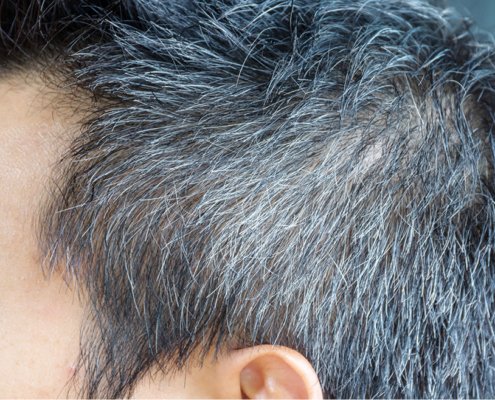
Canitie et pigmentation des cheveux
Cheveux, CosmétiqueLa canitie (grisonnement des cheveux) a un large impact social et cosmétique. QIMA Life Sciences présente ici sa physiopathologie, ses causes sous-jacentes et ses traitements.
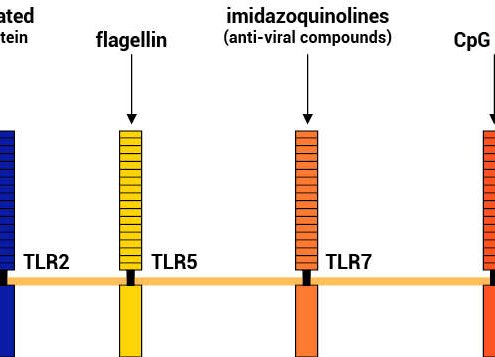
Profiling TLR agonist activity in keratinocytes and link to bacteria-induced innate immunity activation
Cosmetique, Microbiome cutané, Microbiome cutanéIn this study, our goal was first to functionally profile and characterize the response of normal human keratinocytes (NHEK) to microbial patterns (TLR agonists) and IL-1α in parallel. To do so, the effects of multiple TLR agonists and IL-1α were evaluated on the gene expression profile, on signal transduction (NF-ƘB translocation) and also on IL-8 and IL-6 release. Secondly, we also tried to link these responses to those of pathogens of interest in skin microbiota (namely, C. acnes, S. aureus and P. aeruginosa), by evaluating the effect on IL-8 release by NHEK infected with living bacteria from these 3 strains...
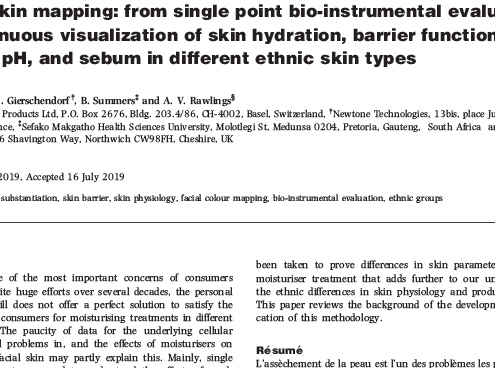
Facial skin mapping: from single point bio‐instrumental evaluation to continuous visualization of skin hydration, barrier function, skin surface pH, and sebum in different ethnic skin types
Barrière cutanée et hydratation, Cosmetique, CosmétiqueDry skin is one of the most important concerns of consumers worldwide. Despite huge efforts over several decades, the personal care industry still does not offer a perfect solution to satisfy the unmet needs of consumers for moisturising treatments in different ethnic groups.
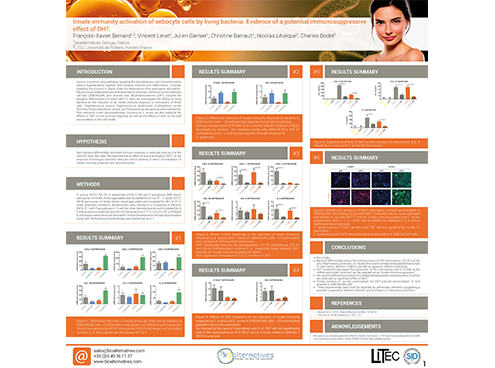
Innate immunity activation of sebocyte cells by living bacteria. Evidence of a potential immunosuppressive effect of DHT.
Acné, Acné, Microbiome cutané, Microbiome cutané, Microbiome cutané, Sebaceous gland regulationAcne is a skin pathology targeting the pilosebaceous unit…sebum hypersecretion and bacterial infection. We studied the effects of living bacteria on the induction of an innate immune response in a sebocyte cell line.
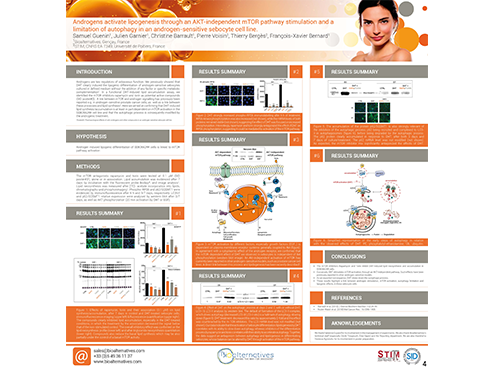
Androgens activate lipogenesis through an AKT-independent mTOR pathway stimulation and a limitation of autophagy in an androgen-sensitive sebocyte cell line.
Acné, Acné, Peau grasse, hyperséborrhée et séborégulation, Sebaceous gland regulationAndrogens are key regulators of sebaceous function... A link between mTOR and androgen signaling has previously been reported...as well as a link between these processes and lipid synthesis...Here we aimed at confirming that DHT-induced lipid synthesis/accumulation is at least in part dependent on mTOR activation in the SEBO662AR cell line and that the autophagic process is consequently modified by the androgenic treatment.
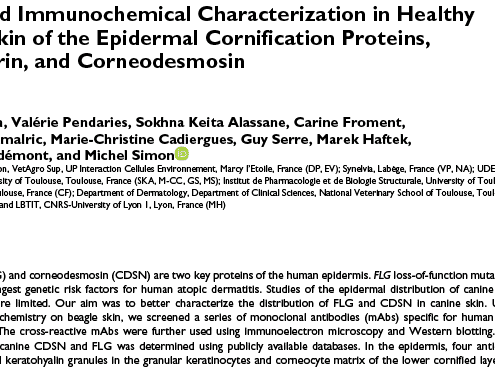
Refined Immunochemical Characterization in Healthy Dog Skin of the Epidermal Cornification Proteins, Filaggrin, and Corneodesmosin
Barrière cutanée et hydratation, Médecine vétérinaire, Skin barrier and hydration, Veterinary medicineFilaggrin (FLG) and corneodesmosin (CDSN) are two key proteins of the human epidermis.
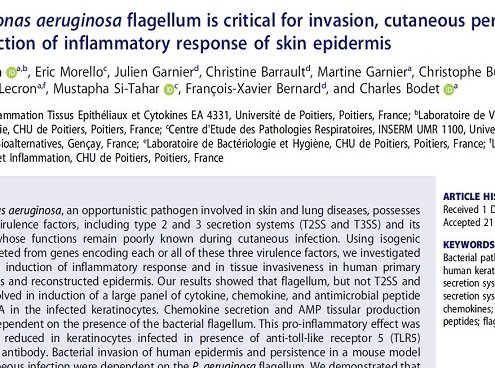
Pseudomonas aeruginosa flagellum is critical for invasion, cutaneous persistence and induction of inflammatory response of skin epidermis
Cosmétique, Microbiome cutané, Microbiome cutanéPseudomonas aeruginosa, an opportunistic pathogen involved in skin and lung diseases, possesses numerous virulence factors, including type 2 and 3 secretion systems (T2SS and T3SS) and its flagellum, whose functions remain poorly known during cutaneous infection.
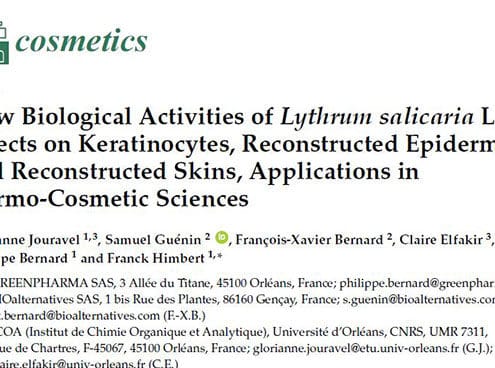
New Biological Activities of Lythrum salicaria L.
Barrière cutanée et hydratation, Cosmétique, Cosmetique, Skin barrier and hydrationThe perennial and widespread herb Lythrum salicaria L., also called purple loosestrife, is a plant that is traditionally used in European medicine.
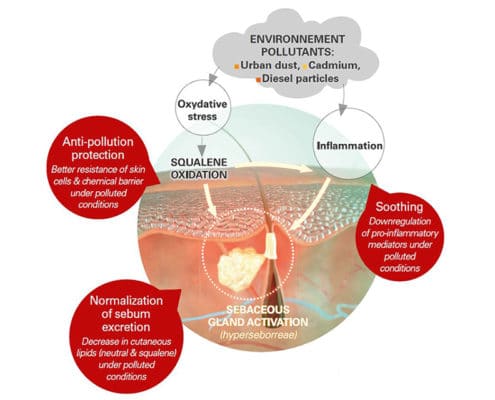
Effects of different kinds of pollutants on the lipidic metabolism of human sebocytes and protective effects of a new macroalgae culture extract
Cosmetique, Peau grasse, hyperséborrhée et séborégulation, Protection et défenses cutanées, Sebaceous gland regulation, Skin protection and immune defense systemSebocytes lipid production are stimulated by pollutants. Ame acts by protecting epidermal cells, human sebocytes and skin from urban dust.
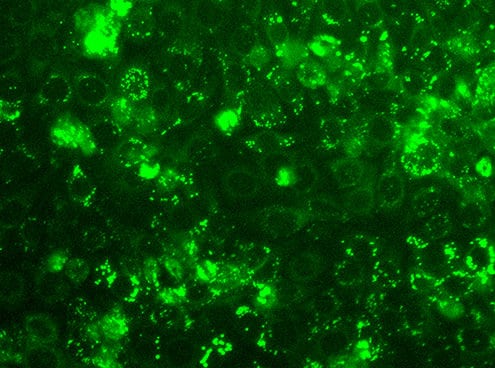
Acné vulgaris : Physiopathologie et mécanismes cellulaires
Acné, Peau grasse, hyperséborrhée et séborégulationL’acné vulgaris est une pathologie inflammatoire chronique cutanée localisée au niveau du follicule pilo-sébacé. Elle apparaît suite à une surproduction de sébum liée à des dysfonctionnements d’origine hormonale (androgène), environnementale (pollution…) et à la colonisation du follicule pilo-sébacé par certaines bactéries (P. acnes).
(Dans ce contexte), QIMA Life Sciences a développé un panel de tests originaux destinés à la découverte et l’évaluation de composés pour le traitement de l’acné.
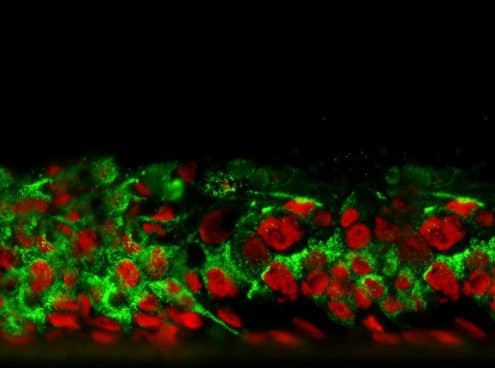
La glande sébacée : Physiologie et fonctions
Acné, Barrière cutanée et hydratation, Peau grasse, hyperséborrhée et séborégulationLa glande sébacée est un organe localisé au niveau du derme. Elle est responsable de la synthèse et de la sécrétion du sébum qui entre dans la composition du film hydrolipidique. Le rôle du sébum est de protéger la peau des agressions extérieures et de la déshydratation. Le sébum permet également d’entretenir la souplesse de la peau et des cheveux.
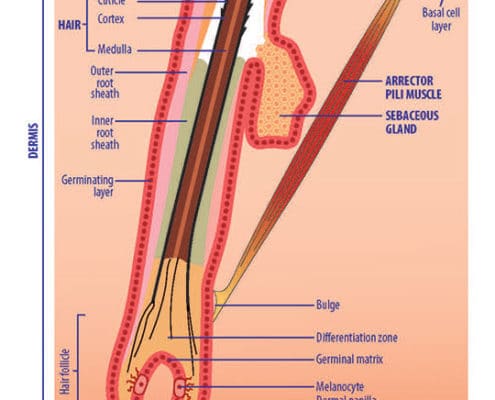
Le cheveu: follicule, structures associées et croissance
Cheveux, CosmétiqueLe follicule pileux est une annexe de la peau qui a la capacité de se renouveler de manière parfaitement autonome, cyclique et asynchrone. L'analyse histologique de l'unité pilo-sébacée révèle une organisation en deux compartiments: le compartiment d'origine épithélial et le compartiment d'origine mésenchymale.
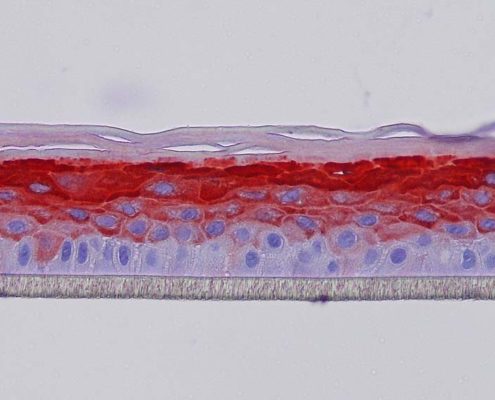
New biological effects of Aphloïol
Barrière cutanée et hydratation, Cosmetique, Cosmétique, Skin barrier and hydrationIn the present study, we identified new properties of Aphloïol (syn. mangiferin) in improving skin barrier function, especially by promoting keratinocyte differentiation, synthesis of transmembrane glycoprotein and lipid neosynthesis.
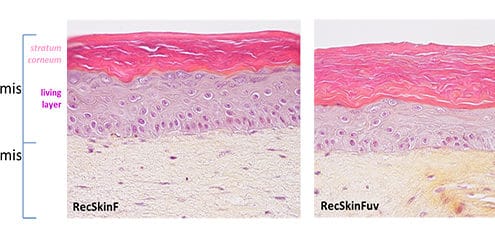
in vitro modeling of skin photoaging: development of evaluation tools for cosmetics
Cosmetique, Skin ageing, Vieillissement cutanéDevelopment of in vitro models skin for better understand the modifications during photo-aging induced by repetitive UV exposure.
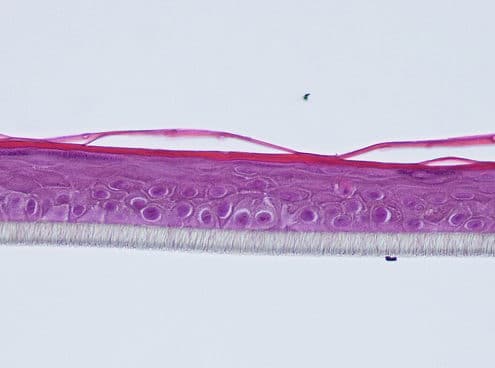
Development of a new model of reconstructed aged skin useful to study antiageing effects of cosmetic compounds
Cell and tissue engineering, Ingénierie cellulaire et tissulaire, Skin ageing, Vieillissement cutanéThe development of new anti-ageing products needs performant in vitro models mimicking morphological changes and physiological modifications appearing during skin ageing. In order to have access to a simple model mimicking the epidermis ageing but in relation with a normal dermis, we have developed a new in vitro model of reconstructed skin comprising an aged epidermis covering a reconstructed dermis built with collagen and normal (young) fibroblasts.
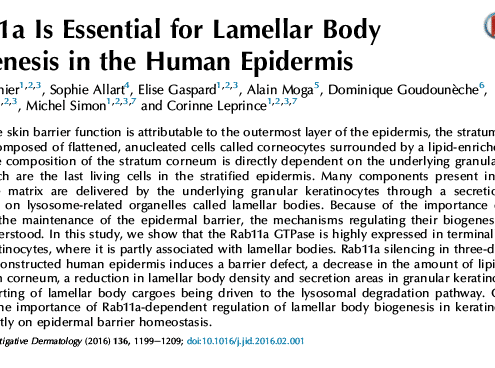
Rab11a Is Essential for Lamellar Body Biogenesis in the Human
Barrière cutanée et hydratation, Skin barrier and hydrationMost of the skin barrier function is attributable to the outermost layer of the epidermis, the stratum corneum, which is composed of flattened, anucleated cells called corneocytes surrounded by a lipid-enriched lamellar matrix.
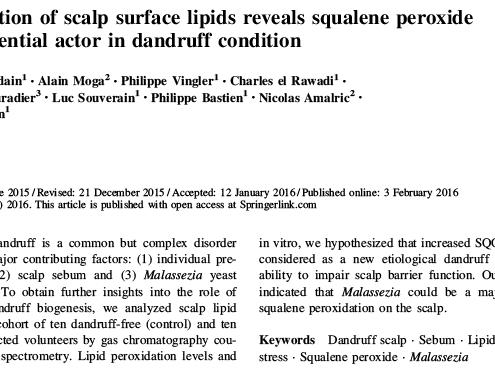
Exploration of scalp surface lipids reveals squalene peroxide as a potential actor in dandruff condition
CheveuxDandruff is a common but complex disorder with three major contributing factors: (1) individual predisposition, (2) scalp sebum and (3) Malassezia yeast colonization.



